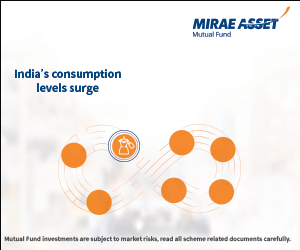6 Factors to Keep In Mind When Choosing SIPs for Investing Money

Systematic Investment Plans (SIPs) are one of the most perplexing investment instruments. While most new investors are wary of them, a lot of seasoned investors too have struggled to get their SIP strategy right. So, before jumping on to understanding how to choose the best SIP, let’s first get some clarity on what SIP really means.
Decoding SIP
A systematic investment plan enables you to invest a fixed amount at regular intervals (monthly, quarterly or annually) in mutual funds, which in turn invest in the markets. Being a flexible instrument, SIPs help you build wealth and instil the habit of saving even in the most undisciplined of us. The major benefit of investing in SIPs is the power of compounding. You earn compound interest on your deposits on a monthly basis, thereby, increasing your investment amount significantly over the long run.
Choosing the Best SIP
Choosing the right fund to invest in via a SIP is very critical to earning high returns. Keep in mind the following factors when deciding which SIP to invest in.
Investment Objective:
Before you even start investing in a fund, it is important to know what you are investing for. You need to ask yourself two questions. 1) Are you investing for the short term or the long term? And, 2) what is your risk appetite? Your investment horizon and risk profile will help determine which type of fund will suit you. For instance if you are a risk-averse investor and want consistent returns, without a tear-jerk reaction, debt funds might be more your thing. However, if you are in for the long haul and are comfortable with market volatility, equity funds should be your investment avenue.Fund type:
As mutual funds are of various types, it’s important to know which type is suitable for your risk appetite. Let’s take a quick look at the types of mutual funds:- Asset-based mutual funds
- Equity Funds – These funds are further categorised into various types: large cap, diversified, mid & small cap, sector and index funds.
- Debt Funds – These funds can be further classified based on investment tenure: money market, income and fixed maturity funds.
- Balanced Funds – These funds are a blend of equity and debt funds and present the best of both worlds to an investor. They counter equity fund’s risky profile by simultaneously investing in debt instruments to ensure steady returns to the investor.
- Structure-based mutual funds
- Open-ended – An investor can enter or exit these funds at any time, without restriction.
- Close-ended – These funds are open for investment for a specific time during the scheme’s launch. Once the new fund offer (NFO) closes, no further investments can be made.
Historical Performance & Returns:
Carefully study funds before investing in them. Compare funds on the basis of performance over a 3 to 5 year term. A comparison of historical performance will tell you how strong or weak a fund is and whether it can withstand market volatility. Avoid funds that perform strongly when the market is high but collapses as soon as the market also falls. When studying these trends, avoid a myopic view and look at fund’s performance over the long term, say 5 years and 10 years.Fund House:
A fund is as good as its fund house. The decisions taken by the fund house shape a fund’s return-yielding capacity and growth. If the fund house does not take the right calls, we investors will end up losing our money. Before investing, read about the fund house and the fund scheme you intend to invest in. Get a copy of the scheme information document and key information document to get such details as the fund house’s investment approach, number of schemes offered, funds/products designed with investors in mind, and more. Answers to these questions will empower you to decide which fund house will be able to help you reach your investment goals.Expense ratio:
If your research has boiled down to funds that are similar in nature, you can choose among them on the basis of expense ratio. This ratio comprises management fee and administrative costs, and is essentially a fund’s annual fee. Schemes that have higher assets under management usually have lower expense ratios, making them a go-to option. A difference of 0.5% in expense ratios of two funds may seem negligible but should not be taken lightly. Consider Fund A with an expense ratio of 1.5% and Fund B with 1%. Now, for these two funds to give same returns, Fund A will have to outperform Fund B every single year. While this may seem doable, in the long term, maintaining this performance will be difficult. Simply put, a high expense ratio will pull down a fund’s performance.Entry or exit load:
Earlier, investing in funds invite a small fee in the form of entry load. However, Securities and Exchange Board of India (SEBI) has stopped funds from levying an entry load. So, now, the only time you pay is when you are leaving a fund (also known as redeeming a fund) which is called an exit load, before the exit load period. The fee varies with scheme, investment tenure and amount. For example, if you redeem your fund whose value has grown to Rs 100 at an exit load of 2%, you will only get Rs 98. Exit loads too are regulated by SEBI and all the fund houses have to follow the directives.
If you get these pointers right, investing in SIPs will be a breeze.
(This article has been contributed by Paisabazaar.com)
Mutual Fund Investments are subject to market risk, read all scheme related documents carefully.
Queries
-
What is the benefit of mutual fund STP
Aug 29, 2019
-
How much to invest to meet target amount of Rs 2 Crores
Aug 26, 2019
-
Can I achieve my financial goals with my current mutual fund investments
Aug 24, 2019
-
Can you tell me return of various indices
Aug 19, 2019
-
What would be the post tax return on different investments
Aug 18, 2019
-
Which Principal Mutual Fund scheme will be suitable for my retirement corpus
Aug 16, 2019
-
What is the minimum holding period for availing NCD interest
Aug 4, 2019
Top Performing Mutual Funds
Recommended Reading
Fund News
-
Kotak Mahindra Mutual Fund launches Kotak Energy Opportunities Fund
Apr 3, 2025 by Advisorkhoj Team
-
Groww Mutual Fund launches Groww Nifty 500 Momentum 50 ETF FOF
Apr 3, 2025 by Advisorkhoj Team
-
Groww Mutual Fund launches Groww Nifty 500 Momentum 50 ETF
Apr 3, 2025 by Advisorkhoj Team
-
ICICI Prudential Mutual Fund launches ICICI Prudential Nifty EV and New Age Automotive ETF FOF
Mar 28, 2025 by Advisorkhoj Team
-
UTI Mutual Fund launches UTI Income Plus Arbitrage Active Fund of Fund
Mar 21, 2025 by Advisorkhoj Team













